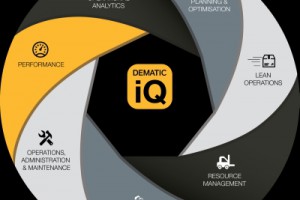New software technology named iQ is launched

Creative Technology covers the level of human productivity development level of things, is the survival and production tools, facilities, equipment, language, digital data, information records, etc.

Here have new software of Dematic has launched Dematic iQ, its next-generation software platform that it says goes beyond traditional warehouse control systems into knowledge-based logistics.
The software platform is designed to provide businesses with the information they need to quickly adapt and optimise their supply chain fulfilment operations on a real-time basis, whether on-site or remote. The software optimises operations using advanced analytics to gain more value from warehouse and enterprise data.
“Today’s order fulfilment environment poses a number of challenges, including the need for increased productivity and accuracy, and the pressure to cut costs. Dematic iQ provides customers with decision guidance from one easy-to-use logistics software platform,” said Pas Tomasiello, Dematic’s director of integrated systems. “It helps logistics managers take charge of their business processes and operations in order to make sustainable improvements that deliver a competitive edge.”
Developed as a scalable and modular platform that will accommodate manual processes through to highly automated systems, Dematic iQ addresses DC business processes. Dematic iQ has the ability to integrate with existing operations and business systems to provide the transparency and full insight needed to make real-time decisions on resource allocation.
“In recognition of the vast amounts of data Australian and New Zealand businesses now have access to, Dematic is positioned to help these businesses leverage their information to optimise their operations,” said Pas Tomasiello.
Dematic iQ is said to:
Broaden warehouse control footprint.
Improve quality, accuracy and tracking of equipment and orders.
Reduce cycle time, cost, and storage footprint.
Maximise visibility, efficiency, and decision-making ability.
Enable common services, resource sharing, and experience across the platform.
Maximise profit throughout the order fulfilment lifecycle.
Improve on-time shipments.
Maximise existing IT investment.